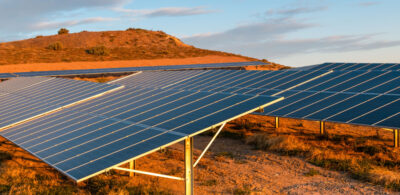Key sustainability factors impacting business in 2022
31 January 2022
2021 was another year of great change and uncertainty as the pandemic presented further challenges to business and social continuity.
This, coupled with a heightened focus on environment, social and governance (ESG) matters, meant sustainability was integral to decision making in 2021 – and this trend is set to continue in 2022.
Indeed, the risks and opportunities presented by the scientific and growing social acceptance of climate change are having an unprecedented effect on the pace of the energy transition globally. It is fair to say that no industry sector is unaffected.
Areas of focus
Increased integration of ESG considerations
2021 saw an increase in the integration of an environmental, social and governance (ESG) lens into all business decisions, from stationery choices through to investment partnerships. This focus on ESG compliance was intensely sharpened by the pandemic and has presented opportunities to differentiate and demonstrate resilience in an uncertain market, while highlighting the need to exercise diligence and care in identifying and reporting on risk. Indeed, 2022 is likely to see growth in the momentum towards mandatory ESG reporting.
One ESG consideration that is gaining traction is the impacts of businesses on biodiversity. As the survival of more species becomes critical, increased focus and legal scrutiny will be applied to actions which impact these species. Beyond just climate change risk disclosures, the creation of the Taskforce on Nature-related Financial Disclosures and the anticipated 2023 release of its biodiversity loss risk reporting framework will provide Australian corporations with the tools to respond to this next frontier in ESG-related reporting.
Anticipating the business impacts of climate change
In 2022, focus will continue to fall on pre-empting the serious implications of climate change both in terms of physical risk to assets and supply chains and with regards to the risks and opportunities presented by the energy transition, which are already having consequences from the court room to the board room.
There can be no doubt that 2021 saw an exponential increase in climate change litigation. Examples of the many and varied types of litigation brought against government, corporations and projects in 2021 include:
- the Sharma judgment (imparting a potential duty of care in environmental decision making and bringing the health impacts of climate change into the spotlight);
- the commencement of Australia’s version of the Urgenda case in the form of the Pabai Pabai case (concerning whether the Commonwealth government has a legal obligation to prevent the loss of certain Papua New Guinea communities to climate change as a result of sea level incursion and inhabitability);
- greenwashing claims in relation to climate change matters;
- growing obligations to prepare now for biodiversity loss risk disclosures, including arising from climate change; and
- increased challenges against approvals, or calls for refusals, of coal and gas related projects. Examples include the Bylong Valley Coal Mine, the Dendrobium Mine and the Narrabri Gas Project and further consideration of the regulation and conditioning of scope 3 emissions as well as tighter licensing conditions related to emissions.[1]
In Victoria, new rights for third parties to pursue enforcement action under the Environment Protection Act 2017 (Vic) from 1 July 2022 will likely see the limits of the State’s new general environmental duty and other proactive environmental management duties tested in Court.
In view of the above, we can only expect increased climate change-related litigation as community groups mobilise to combat the existential threat presented by rising temperatures. For this reason, a revisiting of traditional options for commercial dispute resolution may now be warranted, such as considering a role for arbitration in resolving the inevitable ESG-related disputes that will arise.
We can also expect a growing number of disputes arising from new partnerships formed by the energy transition (e.g. around green technology and decarbonisation of products, such as construction materials) and as a consequence of unanticipated force majeure-type environmental events. This may have implications for Government grants in relation to waste reduction and sustainable investment initiatives as against funding for traditional fossil fuel projects. In this respect, the proceedings challenging the A$21 million Government grant for shale gas exploration in the Beetaloo Basin will be interesting to monitor.
Challenges and opportunities will continue to arise from the uptake of green technology, the waste consequences of solar photovoltaics, the emerging market for electric vehicles and the associated charging for infrastructure as well as the growing market for other emerging and growing renewable energies with a technology element, such as Battery Energy Storage Systems (discussed below).
Joining the onwards march to net zero
While COP26 may not have resulted in any significant change to emissions-reduction pledges may not have resulted in any significant change to emissions-reduction pledges, the Australian Government has now committed to net zero by 2050 and most states and territories have adopted 2030 emissions reductions targets that extend beyond Australia’s present 26-28% target. Businesses and government organisations alike would do well to align or better their own targets with these commitments.
Alignment of Australia’s carbon market rules with the Paris Rule Book will be necessary for Australia to participate in international carbon trading, for which there may be great opportunities given Australia’s abundance of available land, wind and solar resources.
Carbon storage and a renewed focus on reversing deforestation and land degradation by 2030, along with the global recognition of the need to reduce reliance on coal power will fuel the uptake of renewable energy options in Australia and internationally.
Finally, the new International Sustainability Standards Board will develop global Sustainability Disclosure Standards, to standardise sustainability reporting with existing financial reporting standards, all of which will have implications either on a voluntary or mandated basis for financial disclosure protocols.
An expanding sustainability agenda
The sustainability agenda more broadly continues to evolve, with a continued focus on waste reduction, recycling and phasing-out single use plastics, such as the plastics legislation recently introduced in NSW, along with a new focus on the biodegradability of various products.
Reinvigorated attention on circularity, or cradle-to-grave (even cradle-to-cradle) thinking as we try to ‘close the loop’ will not only underpin continued developments in waste management, but will likely highlight the interconnectedness of other environmental issues and regulatory frameworks (e.g. waste, carbon, water, biodiversity etc.).
While there is nothing new about developments in the US influencing law and policy in Australia, from his first moments as President Joe Biden has embarked upon a process of creating the most comprehensive environmental justice platform of any American president in history and Australia’s strong cooperative relationship with the US means the momentum around this agenda is playing out, and will continue to play out, with fervour in Australia as discussed in detail in our previous insight (How emerging US environmental trends and initiatives may impact Australian law and policy).
Understanding and regulating emerging contaminants
Developments in the science and regulation of emerging contaminants will underpin changing perspectives of the traditional contractual allocation of contamination risks in land transactions, development agreements, PPPs and construction contracts. In particular, PFAS (per and poly fluoroalkyl substances) will continue to feature as high-profile emerging contaminants as scientific research into the human health and environmental effects of these persistent, bio-accumulative and toxic chemicals continues to evolve.
With the much anticipated update to Australia’s PFAS National Environmental Management Plan (NEMP) due to be finalised in the first half of 2022, there is much speculation as to whether the trending conservatism in screening criteria will continue. International developments arising from the USA EPA’s PFAS Roadmap and President Biden’s plan to combat PFAS remediation over the next three years may well influence the position set out in the updated NEMP, including the results of further toxicity studies and research into remediation technologies.
Prior to the 2019 Australian federal election, the Australian Labor Party announced its support for a US-style federal Environment Protection Agency (EPA), the sort of body that could, amongst other key responsibilities, oversee the somewhat staggered response of the states and territories to the risk of emerging contaminants like PFAS.
While Labor has yet to recommit to the policy ahead of the 2022 poll, a recent article by Justice Nicola Pain of the NSW Land and Environment Court highlights the desirability of a national EPA in the context of the Samuel Review into the Environment Protection and Biodiversity Conservation Act 1999’s identification of weak enforcement mechanisms.
Housing affordability and supply
Housing affordability has become a priority concern for many Australians, particularly those in major cities, linked at least in part to critical housing supply issues. Governments are exploring various policy levers to address these issues and will continue to ramp-up these efforts approaching the upcoming Federal and key state elections in 2022-23. Historically, though, policies aimed at improving the affordability and supply of housing have often proved unsuccessful. They also compete against policies that disrupt affordability and supply. Unsettled infrastructure contributions reforms in NSW could continue this trend in 2022.
Increased focus on Indigenous heritage and thinking
Accompanying the move to better incorporate placemaking and design in our planning systems is a growing body of work on recognising and caring for Country in design. Indigenous members of the NSW public service, Indigenous communities and the NSW Government Architect have produced a ‘Connecting with Country’ framework, and engaging with Country is part of one of the five key principles of the new Design and Place SEPP in NSW.
At the Commonwealth level, recent reviews of environmental and heritage protection regimes have expressed concerns about the vulnerability of sites of Indigenous cultural heritage. At least one state is making inroads on this front, with Western Australia proposing to replace its existing Aboriginal Heritage Act with a new regime. With a Senate inquiry into the destruction of the 46,000 year old Juukan Gorge caves concluding that new legislation is required to prevent such incidents, we expect this space to be a busy area of reform in 2022.
Looking ahead
One way or another, making sustainability part of an organisation’s agenda is critical to resilience and survival at a time where our health and the environment are central. COVID-19 has fundamentally changed the way in which we interact with each other and the world around us, and drawn an even greater focus on sustainable practices.
As sights are set on the wellbeing of our community and planet, businesses and organisations that drive the economic recovery through this lens will be well positioned to thrive in the year ahead.
[1] This includes the proceedings brought against the EPA in Victoria, joining Alinta Energy, AGL and Energy Australia, giving rise to questions as to whether Australia may enjoy its own version of the Royal Dutch Shell decision in 2022, depending also on the outcome of the Sharma appeal.
Authors

Head of Environment and Planning
Tags
This publication is introductory in nature. Its content is current at the date of publication. It does not constitute legal advice and should not be relied upon as such. You should always obtain legal advice based on your specific circumstances before taking any action relating to matters covered by this publication. Some information may have been obtained from external sources, and we cannot guarantee the accuracy or currency of any such information.
Key Contact
Head of Environment and Planning



